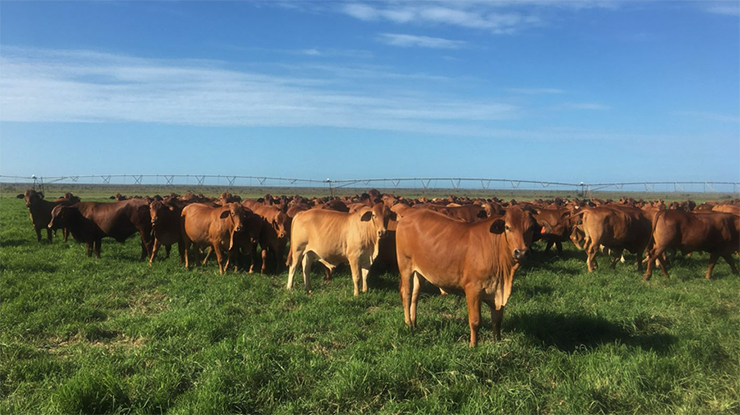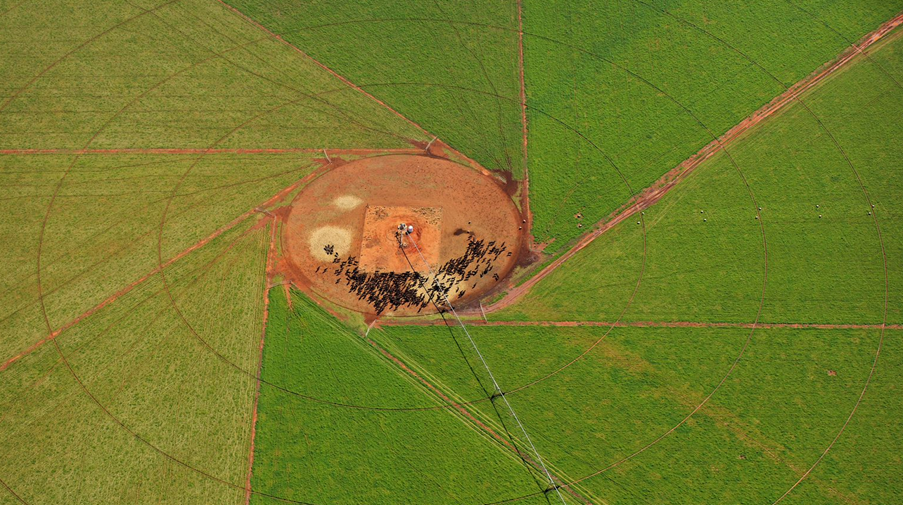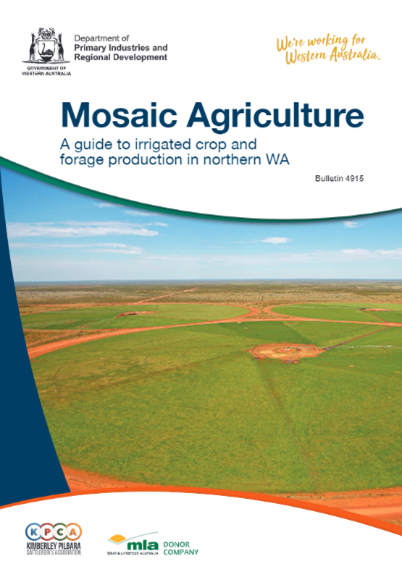Turning on the tap for irrigation opportunities
08 December 2021

Traditionally, northern WA’s dominant agricultural sector has been extensive pastoralism, with cattle grazing native vegetation under low input production systems.
This is starting to change, as producers set their sights on boosting productivity by targeting nutritional constraints, especially for breeders and young cattle.
‘Mosaic agriculture’ – or the use of irrigation systems to grow high quality forage – is an emerging area, with producers tapping into groundwater or surface water resources in the west Kimberley and from mine de-watering in the Pilbara. Harnessing these water resources is helping overcome a constraint in pastoral systems – the low quality of the feed over the dry season, which results in stock losing condition.
But it’s not as simple as installing irrigation infrastructure – the unique combination of soils and climate meant there was minimal information available for the fledgling irrigation industry in northern WA.
So, the Department of Primary Industries and Regional Development (DPIRD) with co-funding from the MLA Donor Company undertook a five-year project to identify the most viable crop and pasture options, expected production and develop management packages.
“A large number of crop and pasture species can be grown in northern WA at some time of the year, however, many do not produce sufficient biomass (or grain) to be economically viable,” DPIRD Research Scientist Geoff Moore said.
“Our research has highlighted that annual biomass yields of 35 tonnes of dry matter per hectare (DM/ha) are readily achievable for some grass species and up to 50t DM/ha may be possible with high applications of nitrogen fertiliser.
Tropical legumes like centro, lablab, cowpea and butterfly pea. These provide a source of high-quality feed, as they’re readily digestible and high in protein, however do present some limitations that restrict their usefulness under irrigation.
They’re generally less productive than warm season grasses and, with the exception of lablab, their growth pattern is typically constrained over the dry season. However, modest production of a high protein feed source can have particular value for young, growing animals.
Temperate annual crops and pastures have a role over the dry season, but need to be harvested before the onset of high to extreme temperatures commonly experienced from October–April.
In northern WA, the opportunity for broadacre cash crops is currently limited and opportunities in horticulture will depend on individual businesses identifying market opportunities.
Lessons learned
Kevin Bell is technical innovations manager at Pardoo Beef, where he has seen first-hand how irrigation development can underpin a productive beef herd.
Research was an essential ingredient in the Pardoo journey, and has informed practice change to establish a profitable irrigation system in northern WA.
Here, Kevin steps through three ways he has incorporated this MDC-funded mosaic agriculture research to adjust crop management, improve irrigation efficiency and fine-tune grazing management at Pardoo:
1. Pasture and crop options
“We’re now successfully using a combination of Rhodes grass for grazing and maize for silage, as well as a range of other forage crops.”
2. Feed quality
“What really stood out was the importance of introducing cattle to the irrigated area when the fodder is leafier, more digestible and favoured by cattle.
“The shorter the grazing period, the less wastage and better utilisation.”
3. Maintaining pastures
“Climatic variations in the Pilbara can cause extreme growth changes in pastures in just a week.
“We can now predict when we’ll need to bring another 1,000 cattle on to graze an area, or start mowing it for hay.”
“There is, however, a trade-off with high biomass production often leading to lower feed quality.”
What pasture is best?
Here’s a look at some of the well-adapted pasture options suited to northern WA’s conditions:
Warm season (C4) annual grasses including hybrid sorghum, sweet sorghum, pearl millet and maize.
These annual grasses have high potential growth rates (150-250kg DM/ha per day) under favourable conditions and, with the exception of maize, typically have several cutting cycles.
In northern WA, the high-input, high-quality crop of maize is essentially a dry season crop as some growth stages are adversely affected by high temperatures. Maize is also the preferred food source for fall armyworm, so there are some ongoing challenges learning to manage this.
Subtropical or warm season (C4) perennial grasses including Rhodes grass and panic grass. Well-adapted warm season (C4) perennial grasses have a very high biomass potential, assuming adequate irrigation and fertiliser.
Potential growth rates during the peak period of October–April are more than 100kg DM/ha/day.
Feed quality is strongly related to the proportion of leaf compared with stem and there is often a trade-off between biomass production and feed quality.
“In our field trials, Rhodes grass had the highest biomass production, but feed quality is moderate unless best management practices are applied,” Geoff said.
“Rhodes grass is currently the best option for a cut and carry system, while panic grass is a palatable, productive option for stand-and-graze systems.”
|
Seasonal action plan |
Find out more about growing irrigated Hard copies are available from the
|
Read more about crop selection here


 rangelands
rangelands 
